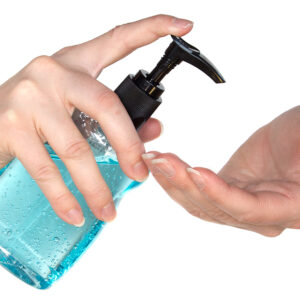Over the past year and a half, American consumers have been pulled every which way when it comes to guidance and healthy best practices. It has been nearly impossible for many to keep up with the rules on what to do and what not to do in order to keep yourself and your family members safe.
One important area that has been muddled with confusing guidance is that of hand sanitizers. Early on in the pandemic, the Trump administration made a call to lower standards for hand sanitizer manufacturing – a move that was well-intentioned but led to a swarth of low-efficacy products entering the market.
In response to this, this past July, I wrote a piece in The Hill calling on the FDA to rescind emergency guidance for the manufacturing of hand sanitizers. The emergency move did its part to ensure consumers had hand sanitizers, but once traditional manufacturers caught up to demand, the emergency guidance was no longer needed and instead was posing a risk to Americans’ health and safety.
Fast forward to this month, after a year and a half of emergency guidance, the FDA has finally rescinded the temporary guidance – an important step in the right direction.
However, there is more that must be done to ensure that consumers are only putting effective and safe products on their hands, including issuing guidance on bulk hand sanitizer use and distribution. Otherwise, consumers will continue to be left with a false sense of security that will only serve to prolong this pandemic and be more vulnerable as flu season begins.
Because there has been a lack of consistent communication about best practices when it comes to hand sanitizer, many business owners, educators, restaurant workers and others are simply refilling their sanitizer dispensers with whatever product they have on hand, which leads to ineffective products and higher rates of bacteria. Not only that, but patrons at these establishments have no idea what end-product they are putting on their hands, as the mixed product often does not match the label on the dispenser.
With the influx of toxic hand sanitizers on the market – including very recent reports of hand sanitizers contaminated with benzene, acetaldehyde and acetal – that problem is only growing worse.
That is why ACI wrote a letter to the FDA to issue guidance for bulk, or open refillable, hand sanitizer. As we said in the letter, often, many businesses, schools, restaurants, and other public forums provide bulk hand sanitizer dispensers for consumer use. These dispensers are helpful in providing on-the-go sanitizer to consumers in need. However, with these benefits also comes the downside of the unsafe practice of “topping off” dispensers with bulk and potentially unsafe products.
As a short cut, employees will fill up the dispenser before it is empty, often with an entirely different product. Not only does that result in mislabeling and consumer confusion, but it leads to the potential for high rates of bacteria growth and lower efficacy as a result of product mixing.
According to CDC guidelines, “refilling or ‘topping off’ containers of liquid soap and hand sanitizer has been associated with outbreaks of pathogenic bacteria,” yet the FDA has not issued any guidance on best practices, even though we’ve seen this concern grow exponentially over the past year.
I have spent my career advocating in the best interest of the American consumer, and this pandemic has only shined a light on the many risks they face every day. As the risks of COVID-19 pandemic continues and we enter the flu season, the FDA must do its duty to protect Americans from unhealthy and dangerous products. We are looking to the agency to step up and take the next steps in keeping toxic hand sanitizer products out of the hands of Americans.

